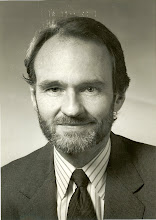Most know by now that the great Anna Schwartz passed yesterday, at 96. As an economic historian she was without equal. As a critic of Fed policy she often shot from the hip; unfortunately for her antagonists, she did so with the accuracy of a Wyatt or Morgan Earp, or a Bat Masterson - cool and accurate.
We worked a tad with Anna and her co-author of A Monetary History of the United States, 1867 –1960, Milton Friedman. It was October 19, 1993 in front of the House Banking Committee’s hearing on HR28, the Federal Reserve System Accountability Act, that Anna and I and Jim Miegs, with the help and endorsement of Friedman, were able to waylay Greenspan’s plans for continued cloak and dagger operations at the Fed. The Act itself went nowhere but the hearing got policy makers’ attention, scaring the pants off most of them.
All were there that day, the first time all presidents and governors were under one roof. Guys in black suits with bulges under their vests were everywhere. Anna and I sat directly behind Greenspan and watched him sweat it out, deceiving the Chair that afternoon. That’s history. Greenspan saw the light; his illegal leaks to one of two reporters to the WSJ ceased immediately. Seeds were planted for reasonable accountability. The FOMC decision was soon announced same day.
It was Anna’s presence which really fetched the attention of the Fed in that she liberated Street economists to finally speak out. Before, most were afraid to say much under the threat of being fired (given the incestuous relationship between recognized dealers and the Fed) but Anna embolden these types, giving them courage; soon after, they came out of the wood work. Suddenly a Goldman or Nikko couldn’t fire their economist for complaining about the obvious, on the pain of looking foolish and petty.
So we can bet that Anna is upstairs right now, researching away to her heart’s content.
Thanks again Anna for the inspiration. You and your work – neither could have been improved upon.
Robert Craven
We worked a tad with Anna and her co-author of A Monetary History of the United States, 1867 –1960, Milton Friedman. It was October 19, 1993 in front of the House Banking Committee’s hearing on HR28, the Federal Reserve System Accountability Act, that Anna and I and Jim Miegs, with the help and endorsement of Friedman, were able to waylay Greenspan’s plans for continued cloak and dagger operations at the Fed. The Act itself went nowhere but the hearing got policy makers’ attention, scaring the pants off most of them.
All were there that day, the first time all presidents and governors were under one roof. Guys in black suits with bulges under their vests were everywhere. Anna and I sat directly behind Greenspan and watched him sweat it out, deceiving the Chair that afternoon. That’s history. Greenspan saw the light; his illegal leaks to one of two reporters to the WSJ ceased immediately. Seeds were planted for reasonable accountability. The FOMC decision was soon announced same day.
It was Anna’s presence which really fetched the attention of the Fed in that she liberated Street economists to finally speak out. Before, most were afraid to say much under the threat of being fired (given the incestuous relationship between recognized dealers and the Fed) but Anna embolden these types, giving them courage; soon after, they came out of the wood work. Suddenly a Goldman or Nikko couldn’t fire their economist for complaining about the obvious, on the pain of looking foolish and petty.
So we can bet that Anna is upstairs right now, researching away to her heart’s content.
Thanks again Anna for the inspiration. You and your work – neither could have been improved upon.
Robert Craven
